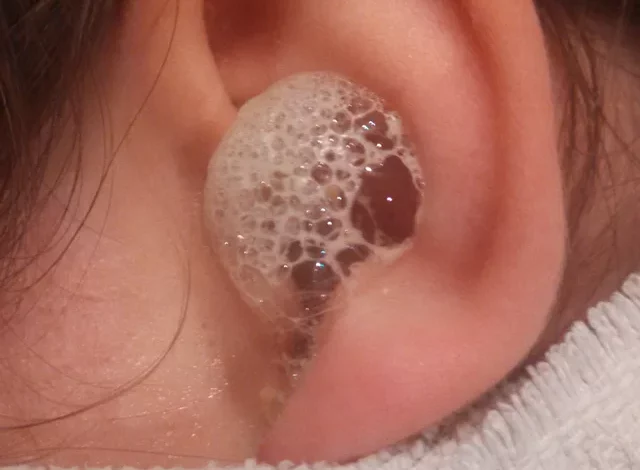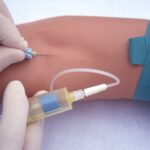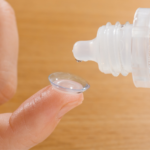Can You Put Hydrogen Peroxide In Your Ear?

The ears are organs that provide two main functions — hearing and balance — that depend on specialized receptors called hair cells.
• Hearing: The eardrum vibrates when sound waves enter the ear canal. Ossicles, three tiny bones (including the stapes, the smallest bone in the body), pass vibrations to the oval window, which is a membrane at the entrance to the inner ear.
• Balance: Balance is achieved through a combination of the sensory organ in the inner ear, visual input, and information received from receptors in the body, especially around joints. The information processed in the cerebellum and cerebral cortex of the brain allows the body to cope with changes in speed and the direction of the head.
The ear is divided into three parts:
• Outer ear: The outer ear includes an ear canal that is lined with hairs and glands that secrete wax. This part of the ear provides protection and channels sound. The auricle or pinna is the most visible part of the outer ear and what most people are referring to when they use the word “ear.”
• Middle ear: Three tiny bones — the malleus, incus, and stapes — within the middle ear transfer sound vibrations from the eardrum to the inner ear. The middle ear is important because it is filled with numerous air spaces, which provide routes for infections to travel. It is also the location of the Eustachian tube, which equalizes the air pressure between the inner and outer surfaces of the tympanic membrane (eardrum).
• Inner ear: The inner ear, also called the labyrinth, operates the body’s sense of balance and contains the hearing organ. A bony casing houses a complex system of membranous cells. The inner ear is called the labyrinth because of its complex shape. There are two main sections within the inner ear: the bony labyrinth and the membranous labyrinth. The cochlea, the hearing organ, is located inside the inner ear. The snail-like cochlea is made up of three fluid-filled chambers that spiral around a bony core, which contains a central channel called the cochlear duct. Inside the cochlear duct is the main hearing organ, the spiral shaped organ of Corti. Hair cells inside the organ of Corti detect sound and send the information through the cochlear nerve.
The ears are the most visible part of the human hearing system. Taking care of your ears is important in many ways. Cleaning is one step, while preventing and treating infections is another. Ear care also include taking steps to avoid unnecessary noise and watching for possible hearing loss. Ear hygiene is important, but so is safety from noise and injury. Some medications and illnesses can affect your hearing.
What is hydrogen peroxide?
Hydrogen peroxide is a mild antiseptic used on the skin to prevent infection of minor cuts, scrapes, and burns. It may also be used as a mouth rinse to help remove mucus or to relieve minor mouth irritation (such as due to canker/cold sores, gingivitis). This product works by releasing oxygen when it is applied to the affected area. The release of oxygen causes foaming, which helps to remove dead skin and clean the area. Hydrogen peroxide is not be used to treat deep wounds, animal bites, or serious burns.
Can You Put Hydrogen Peroxide In Your Ear?
Yes, you can use hydrogen peroxide or ear drops containing hydrogen peroxide to remove excess earwax. Usually, the ears produce enough earwax to protect and clean the ear canal but sometimes, this wax can be produced in excess. Hydrogen peroxide is a cerumenolytic solution, it can soften and dissolve earwax.
However, excess hydrogen peroxide can also cause problems in the ear. Excess moisture can allow bacteria to enter and attack the ear canal. This can cause swimmer’s ear or other types of ear infections, which can be dangerous for your hearing ability.
Here are a few ear hygiene tips:
- Clean your ears with extra care. Don’t clean your ears with anything smaller than a washcloth on your finger. Don’t use Q-tips®, bobby pins or sharp pointed objects to clean your ears. These objects may injure the ear canal or eardrum.
- Earwax is the ear’s way of cleaning itself. If you have a build-up of earwax that is blocking your hearing, see a healthcare provider to have it removed. Don’t try to remove it on your own.
If you experience itching or pain in your ears, call your healthcare provider. They’ll examine you, advise you on suitable treatment and help you decide if you need to see a specialist.
If you have pierced ears, clean your earrings and earlobes regularly with rubbing alcohol.





